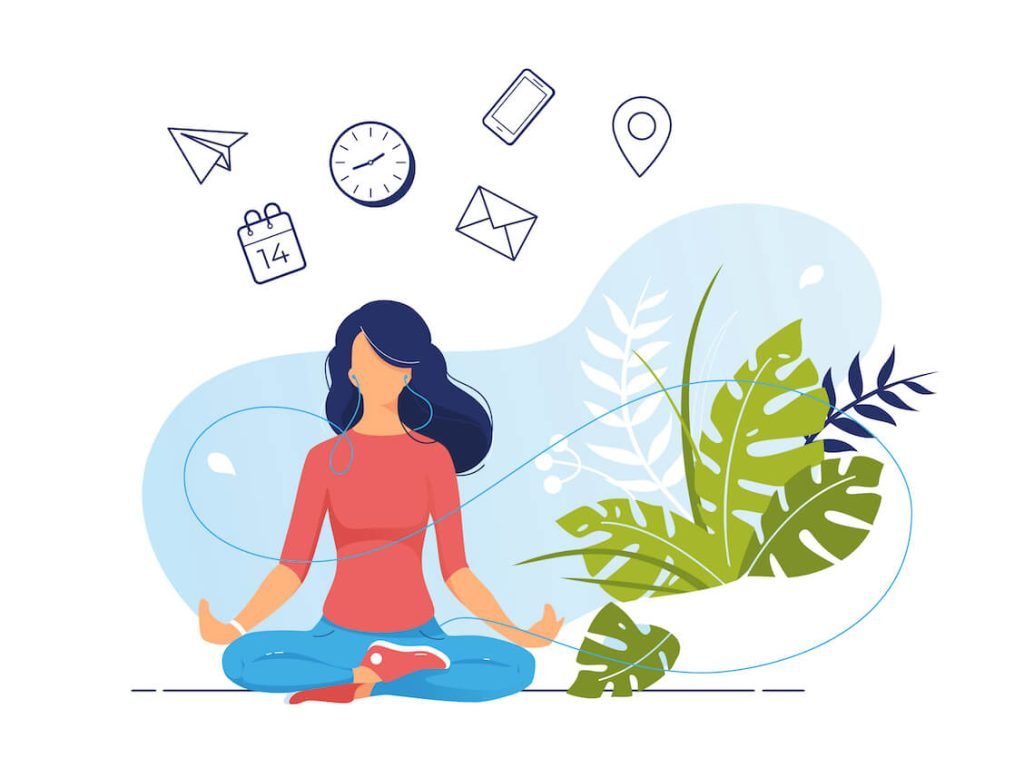
Today, we are taking a closer look at how multitasking skills affect our productivity. We’ll dive into real-life examples to see how multitasking can be both helpful and not-so-helpful when it comes to getting things done.
Fun Fact: Did you know that studies have shown that only 2% of people can truly multitask without a decline in performance? Most individuals experience a decrease in efficiency and accuracy when trying to handle multiple tasks simultaneously.
Multitasking At Work: Yes or No
In the modern workplace, the concept of multitasking often elicits mixed opinions and varied approaches. While some individuals believe that multitasking is a crucial skill for managing a demanding workload, others argue that it hinders productivity and focus.
Multitasking at work means doing many things at the same time. Some people think it’s a good idea because it helps them get more done in less time. They believe that by quickly switching between tasks, they can stay productive and efficient all day long.
But not everyone agrees. Some say multitasking can actually make things worse. They think that when you try to do too many things at once, you can lose focus and make more mistakes. It can also make you feel tired and stressed.
To figure out if multitasking is a good idea, we need to look at different situations. We should think about the kinds of tasks and how they affect our work. By understanding the good and bad sides of multitasking, we can decide when it’s a good idea and when it’s not.
For straightforward and repetitive tasks, such as organizing files or responding to routine emails, multitasking may be advantageous. By combining these tasks and addressing them concurrently, individuals can efficiently complete them in a shorter span of time. However, it is important to note that even seemingly simple tasks can accumulate and become overwhelming if multitasked excessively, leading to decreased accuracy and quality of work.
On the other hand, complex tasks that involve creativity, problem-solving, or decision-making often benefit from undivided attention. These tasks require deep focus, analysis, and the ability to consider multiple factors simultaneously. Attempting to multitask in such situations can hinder the quality of output and decision-making, as divided attention may lead to overlooking important details or making errors. In such cases, it is generally more effective to dedicate uninterrupted time and focus to each task individually.
Additionally, it is crucial to evaluate personal strengths and weaknesses in multitasking. Some individuals may naturally excel at managing multiple tasks simultaneously, while others may struggle to maintain focus and efficiency. By recognizing personal tendencies and capabilities, individuals can make informed decisions about when multitasking is suitable for them and when it may hinder their productivity.
Examples of Multitasking at Work
Good Idea: Simple and Repetitive Tasks
Multitasking can be effective when handling simple and repetitive tasks that don’t require intense focus or critical decision-making. For example, responding to routine emails while listening to a training webinar can help maximize productivity without compromising the quality of either task. These tasks can be done simultaneously without significant cognitive strain.
- Data entry and listening to podcasts
- Organizing files and listening to music
- Reviewing documentation and taking phone notes
- Filling out forms and handling administrative tasks
Bad Idea: Complex and Creative Tasks
Multitasking is generally a bad idea when dealing with complex and creative tasks that require deep focus and concentration. For instance, trying to brainstorm new marketing strategies while participating in a team meeting might result in missed opportunities or lack of contribution to the meeting’s discussions. In such cases, it’s better to dedicate undivided attention to generate innovative ideas and actively engage in collaborative discussions.
- Working on a project and watching a TV series
- Designing a complex architectural project while attending social events
- Programming a software application while responding to emails
- Creating artwork while listening to a podcast
- Creating a marketing campaign while attending a meeting
- Solving complex mathematical problems while engaging in casual converations
- Conducting scientific research while checking social media
Good Idea: Complementary Activities
Multitasking can be beneficial when engaging in activities that complement each other. For example, conducting research while listening to educational podcasts or attending webinars can enhance knowledge acquisition while efficiently utilizing time. By combining these activities, individuals can expand their expertise and stay up-to-date with industry trends.
- Reviewing reports while listening to relevant audio content
- Editing written content while listening to music
- Organizing files while participating in a conference call
- Analyzing data while watching industry webinars
- Creating visual presentations while listening to language lessons
- Responding to emails while exercising on a stationary bike
- Conducting research while collaborating in online forums
Bad Idea: Conflicting Tasks
Multitasking becomes a bad idea when tasks conflict with each other, requiring different skill sets or competing for attention. For instance, attempting to proofread a report while participating in a conference call may result in errors in the document or missed information during the call. Conflicting tasks can lead to decreased productivity and subpar results. It’s better to prioritize and dedicate focused attention to each task separately.
- Writing code while attending a live presentation
- Proofreading a document while participating in a video conference
- Creating graphic designs while engaging in brainstorming stations
- Conducting data analysis while responding to instant messages
- Editing videos while attending a client meeting
- Reviewing financial reports while listening to music
- Conducting market research while checking social media
Good Idea: Routine and Non-demanding Tasks
Multitasking can be effective when dealing with routine and non-demanding tasks. For instance, organizing files while waiting for a colleague’s response or printing documents while engaged in a non-critical conversation can help make the most of idle time. By multitasking during such periods, individuals can accomplish multiple simple tasks efficiently.
- Organizing files while waiting for a colleague’s response
- Printing documents while engaging in a non-critical conversation
- Reviewing meeting notes while waiting for a meeting to start
- Responding to routine emails during short breaks
- Filing documents while listening to voicemails
- Completing Expense reports during downtime
- Reviewing training materials during commute or travel
Bad Idea: High-stakes or Time-sensitive Tasks
Multitasking is generally ill-advised when it involves high-stakes or time-sensitive tasks. For example, attempting to prepare an important client presentation while simultaneously attending to urgent phone calls may result in errors, overlooked details, or missed deadlines. These tasks require focused attention and dedicated effort to ensure accuracy and quality outcomes.
- Finalizing a proposal while participating in a high-level strategy meeting
- Conducting a critical experiment while managing a pressing deadline
- Writing a legal contract while simultaneously attending court proceedings
- Performing surgery while responding to urgent phone calls
- Compiling financial reports while handling time-sensitive transactions
- Conducting a job interview while multitasking with other administrative tasks
- Presenting a keynote speech while managing technical equipment
How to Multitask at Work
- Identify the most important and urgent tasks that require your immediate attention.
- Divide larger tasks into smaller, manageable subtasks.
- Establish clear objectives and deadlines for each task.
- Take advantage of productivity tools like task management apps, project management software, and a time tracker.
- Allocate specific time slots for each task or set of tasks.
- Group similar tasks together – this will allow you to leverage similarities and work more efficiently.
- Minimize distractions by closing unnecessary tabs or applications on your computer, silencing non-essential notifications, and finding a quiet workspace when possible.
- Understand that multitasking requires adaptability.
- Recognize your own capacity for multitasking.
- Understand when it’s better to focus on a single task rather than juggling multiple tasks simultaneously.
- Stay present and focused on each task at hand.
- Time & Tracking
- Aug 14, 2024
Remember, effective multitasking requires practice and finding the right balance. It’s important to assess the nature of each task and determine whether multitasking is appropriate or if a sequential approach would yield better results.
Tips to Boost Multitasking Abilities
Here are a few quick tips for boosting your multitasking abilities:
Engage in activities that enhance your ability to concentrate: practice mindfulness or use
concentration-building techniques like the Pomodoro Technique.
Develop effective organizational strategies: create to-do lists, use task management apps, and maintain a well-structured calendar.
Learn to manage your time effectively: set realistic deadlines, break tasks into smaller chunks, and allocate specific time blocks for different activities.
Use a time tracker like Traqq. With Traqq, you can create and manage tasks, set priorities, and track progress. This helps you stay organized and focused on completing your tasks efficiently.

